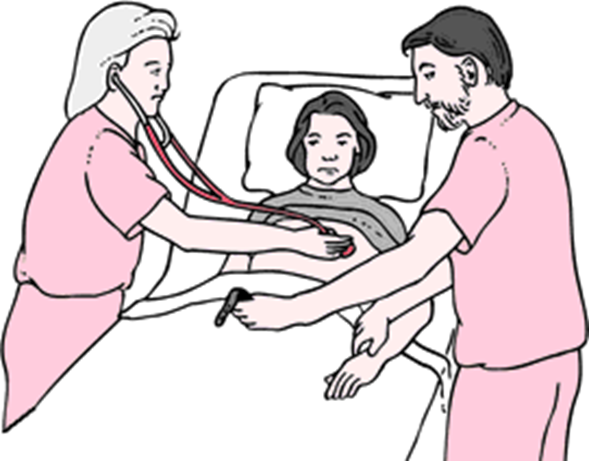A nurse is preparing to administer total parenteral nutrition (TPN) to a client. The nurse should notify the provider of which of the following findings?
Blood glucose 100 mg/dL.
Client's temperature 37.6°C (99.7°F).
Potassium 5.7 mEq/L.
Weight loss of 0.8 kg/day (1.8 lb/day).
The Correct Answer is C
Choice A rationale:
A blood glucose level of 100 mg/dL is within the normal range, so there is no need to notify the provider of this finding.
Choice B rationale:
A client's temperature of 37.6°C (99.7°F) is slightly elevated but not considered a critical finding. It may be indicative of an infection or other mild inflammation, but it does not warrant immediate provider notification.
Choice C rationale:
A potassium level of 5.7 mEq/L is above the normal range (3.5-5.0 mEq/L). Hyperkalemia can lead to serious cardiac complications, such as arrhythmias, and requires immediate attention from the provider.
Choice D rationale:
Weight loss of 0.8 kg/day (1.8 lb/day) should be evaluated and monitored, but it is not an immediate concern that warrants urgent provider notification.
Nursing Test Bank
Naxlex Comprehensive Predictor Exams
Related Questions
Correct Answer is B
Explanation
Choice A rationale:
A capillary refill of less than 1 second is a normal finding and indicates adequate peripheral perfusion. It is not a cause for concern in this postoperative client.
Choice B rationale:

The presence of a pulse deficit should be reported to the provider because it suggests a discrepancy between the apical and radial pulses, indicating potential cardiovascular compromise or inadequate arterial perfusion.
Choice C rationale:
A systolic blood pressure 10 points lower than before surgery can be a normal response to anesthesia or surgery and may not necessarily require immediate reporting unless accompanied by other concerning symptoms or vital sign abnormalities.
Choice D rationale:
Pulse oximetry at 96% is within the normal range for oxygen saturation and does not warrant immediate reporting. However, if the client is experiencing respiratory distress or other concerning symptoms, it should be addressed promptly.
Correct Answer is A
Explanation
Answer: A. Diplopia.
Rationale:
A) Diplopia: Diplopia, or double vision, is a common symptom in multiple sclerosis (MS) due to demyelination of nerves in the brainstem, affecting eye movement coordination. This visual disturbance is frequently seen in MS clients and may worsen during flare-ups.
B) Masklike expression: A masklike expression is more commonly associated with Parkinson’s disease rather than multiple sclerosis. This characteristic facial appearance is due to muscle rigidity, which is not typically a manifestation of MS.
C) Twitching of the face: Facial twitching, or fasciculations, is not typically a primary symptom of multiple sclerosis. While muscle weakness and spasticity are common in MS, twitching is more commonly seen in conditions such as amyotrophic lateral sclerosis (ALS).
D) Agitation: Agitation is not a primary symptom of MS. While MS can lead to cognitive changes or mood disturbances, such as depression, severe agitation is more commonly linked with other neurological or psychiatric conditions.
Whether you are a student looking to ace your exams or a practicing nurse seeking to enhance your expertise , our nursing education contents will empower you with the confidence and competence to make a difference in the lives of patients and become a respected leader in the healthcare field.
Visit Naxlex, invest in your future and unlock endless possibilities with our unparalleled nursing education contents today
Report Wrong Answer on the Current Question
Do you disagree with the answer? If yes, what is your expected answer? Explain.
Kindly be descriptive with the issue you are facing.
